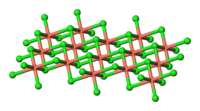
Photo from wikipedia
This study was carried out to evaluate the effects of dietary supplementation of aqueous extract of Withania somnifera (W. somnifera) against cadmium chloride–induced toxicity in the Nile tilapia, Oreochromis niloticus.… Click to show full abstract
This study was carried out to evaluate the effects of dietary supplementation of aqueous extract of Withania somnifera (W. somnifera) against cadmium chloride–induced toxicity in the Nile tilapia, Oreochromis niloticus. Five experimental groups were designed: group (I) was free from cadmium chloride and W. somnifera and served as a control, group (II) was exposed to 1.775 mg L−1 of cadmium chloride only (which is equivalent to 1/4 96-h LC50), while groups (III), (IV), and (V) were exposed to 1.775 mg cadmium chloride L−1 with co-supplementation of dietary W. somnifera in doses of 1.0, 2.0, and 3.0 mL kg−1 body weight (bwt), respectively. The experiment lasted for 4 weeks. In the second and fourth weeks of the experiment, the following indicators were evaluated: hematological (hemogram and blood protein profile), biochemical (activities of serum liver enzymes, namely alanine transaminase (ALT) and aspartate transaminase (AST)), immunological (immunoglobulin M (IgM), serum lysozyme), and tissue antioxidant changes (malondialdehyde (MDA) levels and activities of catalase (CAT) and superoxide dismutase (SOD)). Additionally, gene expressions of glutathione-S-transferase (GST) in the liver were assessed. At the end of the experiment, all fish in all groups were experimentally challenged with Aeromonas hydrophila and the relative protection survival (RPS) was demonstrated. The results revealed that groups exposed to cadmium chloride toxicity and co-supplemented with dietary aqueous extract of W. somnifera at high doses showed significant ameliorative effects in hemogram parameters, total protein, globulin, IgM, and lysozyme against cadmium chloride–induced toxicity compared to the control group and the group exposed to a sublethal dose of cadmium chloride without co-suplemntation of W. somnifera. The results showed also that groups supplemented orally with W. somnifera at high doses have higher antioxidant activities of CAT and SOD and reduction of MDA formation. Levels of gene expressions of GST in the liver were higher in W. somnifera extract-supplemented groups more than those in the group exposed to cadmium chloride–induced toxicity without W. somnifera supplementation. In addition, the results revealed improved RPS with the dietary supply of W. somnifera extract in high doses. In conclusion, this study showed that the dietary supplementation of W. somnifera extract to diets of O. niloticus could be suggested as an effective way to overcome cadmium chloride–induced toxicity because it improves blood parameters and antioxidants, and it can be used as an immunostimulant against the invading bacterial pathogens.
Journal Title: Environmental Science and Pollution Research
Year Published: 2021
Link to full text (if available)
Share on Social Media: Sign Up to like & get
recommendations!